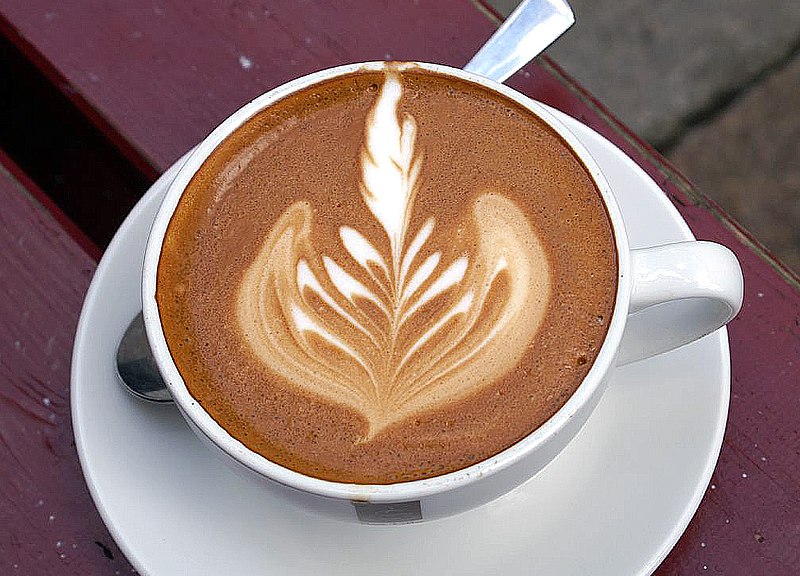 Following on the heels of our Science of Cocktails podcast, we have an episode for the morning after – The Science of Coffee.
Following on the heels of our Science of Cocktails podcast, we have an episode for the morning after – The Science of Coffee.At the recent Science of Coffee event at Lushbucket Cafe as part of The Ultimo Science Festival, I spoke to Rafael Bartkowski from Campos Coffee about the scientific method of making coffee, the most important steps in the process, how to decaffeinate coffee and where in the world you can find the best cup.
Listen to this podcast here:
To go with the podcast, here is a quick description of how Campos Coffee decaffeinates their coffee.
Swiss Water Decaffeination
Campos uses the Swiss Water Process. This method does not use organic solvents, and so is claimed to be better for you. To perform the decaffeination, the first step is to soak green coffee beans in hot water. This releases the caffeine, as well as other soluble compounds within the beans. These other compounds contribute strongly to the taste of coffee – let’s call them “flavour compounds” - and so these particular beans must be discarded. The water solution now contains caffeine and flavour compounds. Caffeine is then stripped from this solution by means of activated carbon filters (see below for a brief description of this process).
With the caffeine now stripped from the water solution, we are left with a solution of flavour compounds – this solution becomes “flavour-charged” (the company’s description, not mine!) A new batch of green beans is then soaked in the flavour-charged solution, releasing caffeine but less of its flavour-compounds, as the solution is becoming saturated. This solution is again decaffeinated by a carbon filter, and new beans are added. This process is repeated until the flavour-charged solution is saturated with flavour-compounds, but crucially not caffeine as the caffeine is stripped from the solution after each soaking. After a number of repeats, no flavour-compounds are released by the green beans - only caffeine is released. This leaves us with (almost) decaffeinated beans that can be roasted to make coffee. It is impossible to completely decaffeinate the coffee.
Given that the world’s only Swiss Water decaffeination facility is based in Canada and so therefore the beans must be transported large distances – especially when bringing them to Australia – the process does not seem very energy efficient. Presumably, a lot of water is also used. There are various online debates as to whether this is the most sustainable process for coffee decaffeination.
Read here and here for more on decaffeination.
Carbon Filtering
Carbon filtering uses activated carbon, which is a form of carbon (usually derived from charcoal) that is extremely porous. This gives it a very large surface area, which can adsorb contaminants in the water. Note that adsorption is different to absorption. Adsorption is the bonding of material onto the surface of another material by intermolecular forces – that is, it gets stuck on the surface. Absorption is the incorporation of one substance into another – that is, one substance penetrates the interior of the other.
One gram of activated carbon has a surface area around 500 m2, and this incredible surface area means that a large amount of contaminant material can accumulate on the surface. Carbon filters are good at pulling organic compounds like caffeine out of water. As the flavour-compounds are also organic, the carbon filters used here need to be caffeine specific. To do this, the carbon filter is coated in a caffeine-specific solvent layer. According to patent 4324840, this coating could consist of petroleum oils, triglycerides, fatty acids, fatty alcohols and other water-immiscible materials. This is dissolved up in hexane, which is then piped through the carbon-filter. The hexane, being volatile, then evaporates away leaving the filter coated in a caffeine-specific adsorption layer. When you think about it, it's hardly chemical free!












wanted to thank you for this great read!! I definitely enjoying every little bit of it I have you bookmarked to check out new stuff you post.
ReplyDeleteGood post covering the science behind the coffee.
ReplyDeleteI read your post and got it quite informative. I couldn't find any knowledge on this matter prior to. I would like to thanks for sharing this article here.face mask with valve uk
ReplyDeleteThe information you mentioned in your blog was really impressive. I like your content that gives me more knowledge about it. Thank you for sharing this. coffee near me
ReplyDeleteI found decent information in your article. I am impressed with how nicely you described this subject, It is a gainful article for us. Thanks for share it. farmers brother coffee
ReplyDelete
ReplyDeleteI do accept as true with all of the ideas you’ve introduced
on your post. They are very convincing and
can certainly work. Nonetheless, the posts are too short
for newbies. May just you please lengthen them a bit from subsequent time?
Thanks for the post.
Also visit my blog post: 휴게텔
(jk)
You have a genuine capacity to compose a substance that is useful for us. You have shared an amazing post about best coffee in melbourne.Much obliged to you for your endeavors in sharing such information with us.
ReplyDeleteI generally check this kind of article and I found your article which is related to my interest. Genuinely it is good and instructive information about restaurants downtown Maumee. Thankful to you for sharing an article like this.
ReplyDeleteThanks for sharing the best information and suggestions, it is very nice and very useful to us. I appreciate the work that you have shared in this post. Keep sharing these types of articles here.Arabic cafe Edgware London
ReplyDeletePhysiotherapist in Pakistan
ReplyDelete